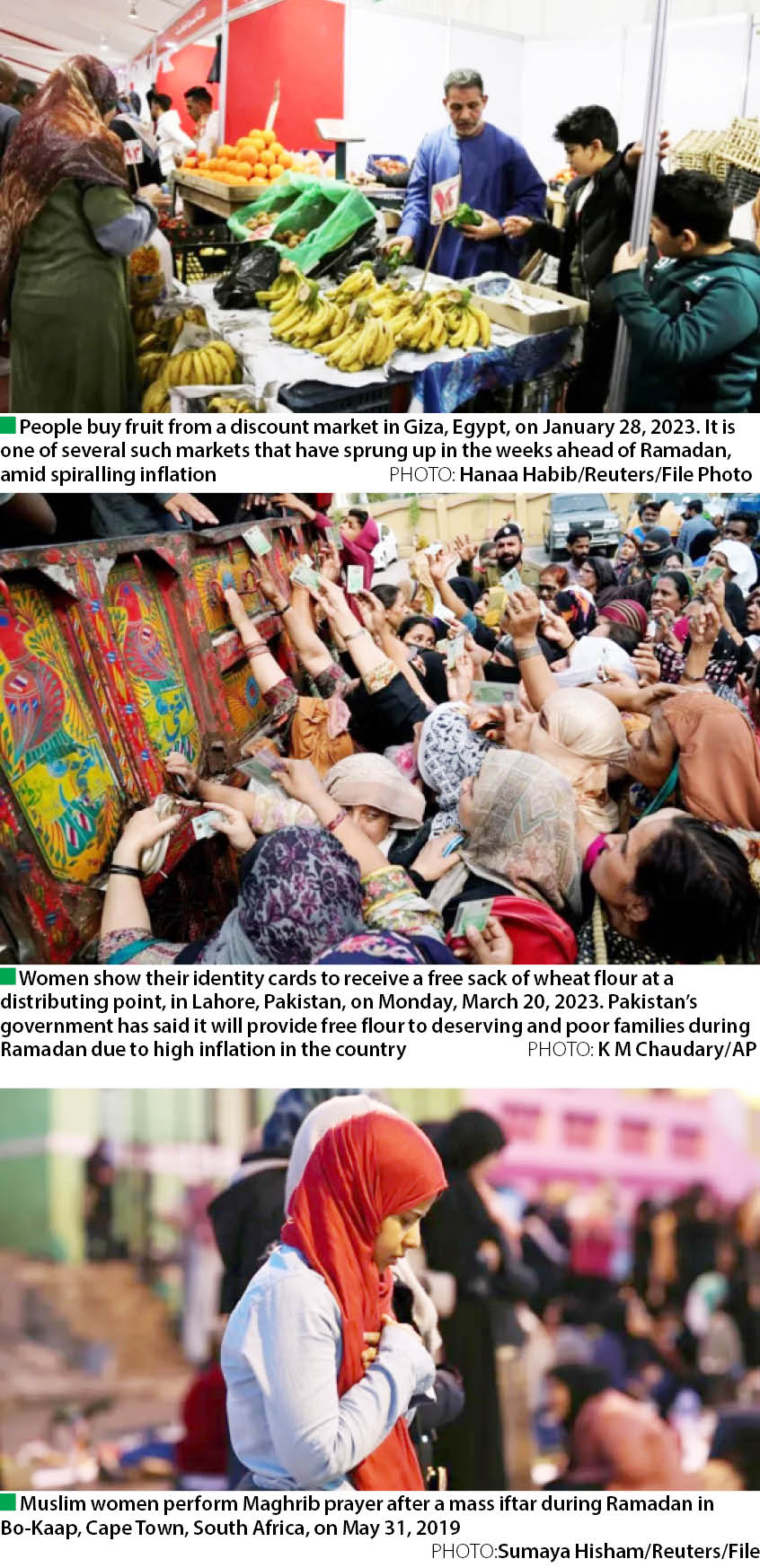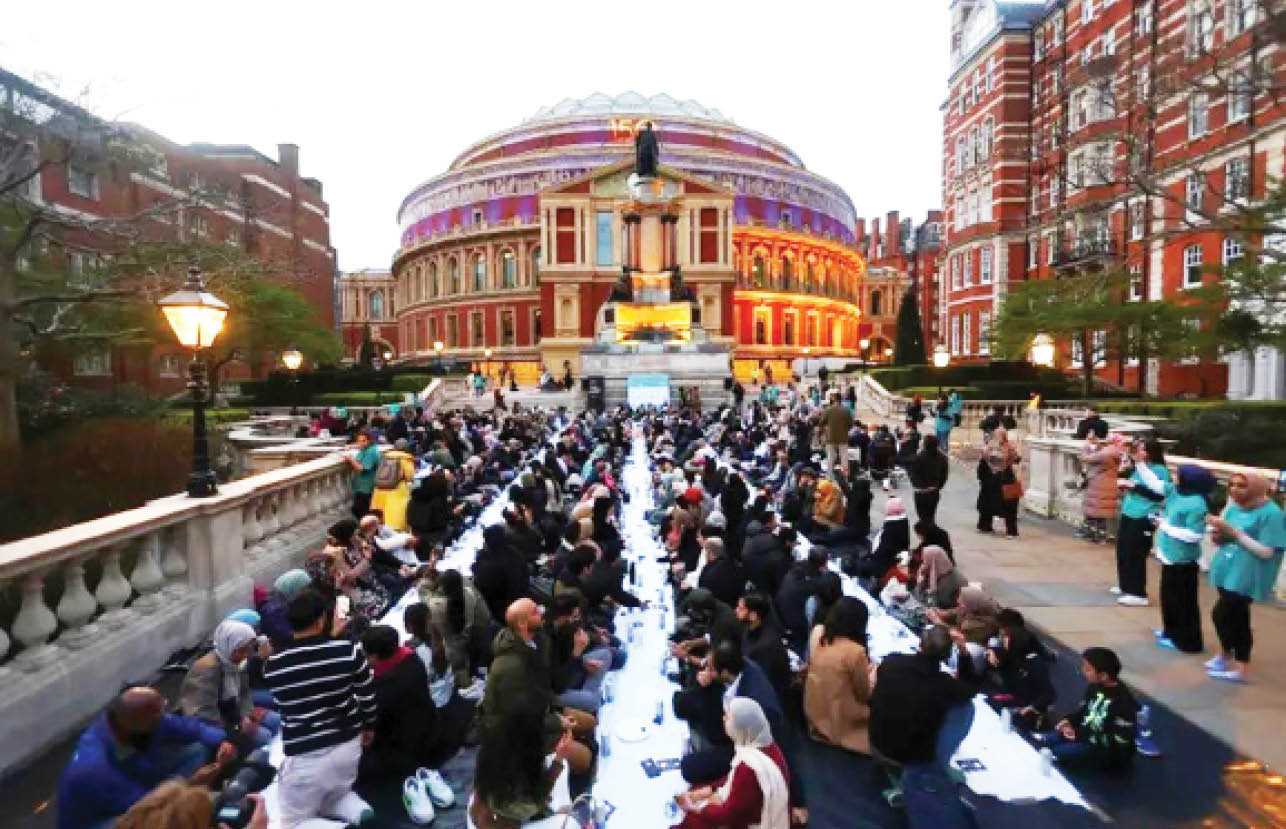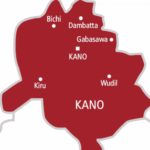Millions of Muslims around the world are feeling the pinch of inflation, three days into the holy month of Ramadan.
Food and energy prices have been soaring as Russia’s war in Ukraine, the lingering effects of the COVID-19 pandemic and climate change-related events weigh on the global economy.
Countries of the Global South – especially in the Middle East, Asia and Africa, where the vast majority of the world’s Muslims live – are also among the worst hit by price surges and shortages of key supplies.
The World Food Programme (WFP) estimates that 349 million people across 79 countries were acutely food insecure in 2022 and more than 140 million required assistance, and that number is not expected to change much in 2023. Asia and Africa are home to the highest number of undernourished people.
INEC chairman’s house not attacked – Spokesman
INEC assures of credible supplementary gov’ship election in Adamawa
Spikes in food prices, in turn, force families to reduce expenses on other goods and services, Friederike Greb, an economist at the WFP, told Al Jazeera.
“If you are poor, you spend more than 50 percent of income on food,” said Greb.
During Ramadan, will higher food and drink costs force households to cut back on traditional items including dates, cakes, biscuits and sugary juices, or to substitute them with cheaper alternatives? How is the cost-of-living crisis playing out for Muslims in different parts of the world? Could this have other social consequences? And can charities help?
The short answer: Across countries battered by record-high prices, many people will likely scale back traditional Ramadan celebrations — from the food they consume to the gifts they buy — charities, community leaders and Muslim families have said. Aid groups are struggling to address the increased demand for help. But the crisis could also bring the community together in unexpected ways.
Middle East: ‘People don’t have money any more’
In addition to global forces, the region’s economies have also been battered by local factors, from wars to droughts and other natural disasters. More than 90 per cent of Syrians live below the poverty line today, 12 years since the start of that country’s brutal war.
Their cost-of-living crisis is expected to worsen in the aftermath of the deadly earthquakes in February that have left more than 50,000 people dead in Turkey and Syria. In Turkey, the inflation rate last month stood at 55 per cent.
In Egypt, where the inflation rate has been rising sharply, and almost touched 32 per cent in February, the government has tried to step in to soften the effects on the poor. It opened discounted Ramadan markets, where food ingredients like flour, meat and pasta are on sale at up to 30 percent lower prices than elsewhere, in January, almost three months before the start of the holy month.
Still, food inflation has soared in the Middle East’s most populous nation and reached 61.8 per cent last month. Once food inflation crosses 15 percent, “that’s going to significantly impact other expenses including shelter, sanitation and transportation”, said Greb. Some reports suggest that even the purchase of traditional Ramadan lanterns has taken a hit.
But no nation in the region is battling a cost-of-living crisis as severe as Lebanon — and the effects will be particularly visible during Ramadan, from the dinner table to social gatherings.
Lebanon, which is in the fourth year of a deep economic, political and social crisis while also hosting the largest number of refugees per capita in the world, is suffering from triple-digit inflation — 123 per cent in January.
The traditional fast-breaking evening iftar dinner will be unaffordable to 80 percent of people in the country, according to American Near East Refugee Aid (ANERA), a prominent charity that works there.
The Lebanese pound (LL) has lost 98 percent in value against the United States dollar since late 2019. Even the cost of the humble fattoush, a popular salad dish, has shot up from LL 4,250 in 2020 to LL 225,000 this year. “If you’ve got dollars then the amount hasn’t changed all that much, but if you’re getting paid in lira that’s obviously a massive cut in your buying power,” ANERA Ppresident Sean Carroll told Al Jazeera.
In 2019, ANERA spent $50 for a food parcel that would grant a family their basic needs for the whole month of Ramadan. Now, the organisation spends two to three times that amount to offer the same service, Carroll said.
Food insecurity is expected to affect 1.46 million Lebanese and 800,000 Syrian refugees in Lebanon (42 per cent of the country’s total population) by April 2023, according to the WFP.
Patricia Khoder, the spokesperson at the non-profit CARE Lebanon, said people were coping by changing their food-sourcing patterns. “People go to the grocery shop at the end of the day to buy the leftovers,” Khoder said. “If they don’t receive food parcels, they borrow rice from the neighbours.”
The spicy Lebanese kofta, the popular kallaj pastry dough and jallab – a juice made from sweet date molasses and garnished with pine nuts or almonds, which is often used to break fasts – have become unaffordable for many households.
Some are making do with just bread — though the cost of a loaf has also gone up from LL 1,500 in 2018 to more than LL 39,000. “They just put some thyme on it or a banana, because bananas are the least expensive fruit,” Khoder said.
With not enough food to go around and the price of fuel no longer subsidised by the government, Eid al-Fitr – the religious festival marking the end of Ramadan when families great one another and share meals – is likely to be a more private event.
“People don’t have money any more,” Khoder said.
Asia: ‘My income is just not enough’
That’s also the bitter reality for Burhan, an electrician in Islamabad, Pakistan, who goes by a single name. Households across the country of more than 200 million people have been battered by a surging inflation rate, which in February was the highest in almost half a century.
Already challenged by a crippling debt crisis, the South Asian nation suffered from devastating floods last year that left farmland larger than the area of the Czech Republic submerged, leading to a severe food shortage.
Things are so bad, said Burhan, that he is grateful if his six children get even one meal a day. “The inflation has increased so much in the last few months. I am left scrambling to make either my rent or pay my utility bills,” the 45-year-old told Al Jazeera. “My income is just not enough for my family anymore.”
Ahead of Ramadan, Burhan sounded despondent. He relies on government-subsidised flour.
“But even that has gotten expensive. A 20-kilo flour bag which used to be for 600 rupees ($2.10) is now going for 1,100 rupees ($3.90),” he said.
His work is dependent on construction projects, which have slowed down along with the broader economy in recent months. He sold his car to make ends meet. It was not enough. So he had to pull his three children out of private schools and admit them to government-run schools that charge lower fees.
Now, he is worried about meeting the expectations of his children in the lead-up to Eid. “I will be happy enough if I can put something to eat on the table every evening,” he said. “There is no chance of buying new clothes for any of my children.”
In fact, economists expect inflation to get worse during Ramadan, when food prices usually rise because families spend more than they otherwise would. Sakib Sherani, an Islamabad-based economist, said government figures suggest the purchasing power of the average Pakistani has been eroded by more than 40 per cent over the past year. The real picture — especially for low-income communities — could be much worse, Sherani told Al Jazeera.
Sajid Amin, a senior official at the Sustainable Development Policy Institute, a research institute in Islamabad, said the continuing “political chaos” in the country was also hurting the government’s ability to respond to the crisis.
“What we had earlier was political instability which has now turned into chaos,” Amin said. “They [the government] are unable to keep food prices in check.”
The struggle is acute in other parts of Asia, too.
In Indonesia, which has the world’s largest Muslim population, a new study has found that 70 per cent of Gen Z consumers are planning to spend less on shopping for themselves this Ramadan, compared with last year. More than a third of those surveyed said they would not travel during the month, and 43 percent said they would cut their spending on gifts. At 5.47 per cent, Indonesia’s inflation rate in February, while far lower than Pakistan’s, was above the levels prescribed by the country’s central bank — with food and beverage prices rising the fastest ahead of Ramadan.
Meanwhile, in Bangladesh, the commerce ministry predicted earlier this month that demand for essential commodities — including biscuits, bread and oil — would fall 20 percent this Ramadan compared with last year. The country’s inflation rate, hovering just below 9 per cent, is at levels unseen in a decade. For the more than one million Rohingya refugees who fled Myanmar and live in Bangladesh, even survival — let alone celebrations — is looking harder, with the WFP announcing cuts in its food budget for them coinciding with the Ramadan period.
Back in Pakistan, Burhan said he has little to hold on to, except “hope and prayers”.
“I just cannot tell you how it is living a life like this,” he said. “I don’t know how to beat this inflation.”
Africa: ‘The needs are so much more this year’
Over in Kenya, Sheikh Juma Ngao is preparing for an unusual Ramadan. As it is, 17 percent of the country’s population lives in extreme poverty. But an inflation rate that has stubbornly persisted above 9 per cent since last September is adding to the woes of most Kenyans.
“Many Kenyans are not able to get three meals a day because commodities are very expensive,” Ngao, chair of the Kenyan Muslim National Advisory Council, a community group, told Al Jazeera.
Demonstrators took to the streets of the capital, Nairobi, and several other cities on Monday to protest against the high cost of living in the first major outbreak of political violence in the East African nation since President William Ruto took office six months ago.
Additionally, a severe drought means that an estimated 5.4 million Kenyans are likely to have to go without adequate food and water between March and June. Staples like ugali, a stiff wheat porridge, are now costlier, because of disruptions to the country’s food imports caused by the war in Ukraine. Russia and Ukraine together supplied African countries with more than 40 per cent (PDF) of all its wheat imports before the Kremlin’s invasion last year, according to United Nations figures.
Now, with the economy in the doldrums, Ngao worries that the zakat aid that wealthy Muslims have traditionally offered during Ramadan might also suffer.
“Many business people from the Muslim community will not be able to give zakat this time around,” Ngao said. And there’s more bad news. “We usually invite family members over, but the bad economy is putting this at risk,” he added. “We are praying to God that this tradition survives.”
Meanwhile, in South Africa, the cost-of-living crisis might actually end up bringing people closer during Ramadan.
Shaykh Mogamat Safwaan Sasman, a senior official at Cape Town’s Muslim Judicial Council (MJC), a body of Muslim leaders, said “mass iftars” are becoming common.
“[Mosques] are actually encouraging [people] to have iftar at the masjid instead of doing it at home to cater for more people or make it stretch a bit further,” he told Al Jazeera.
The Crescent Observers’ Society, the body under the MJC responsible for declaring the start of Ramadan in South Africa’s Western Cape province, would earlier produce 200 food parcels during Ramadan, each meant for a family over a month, Sasman said. Now, they are making 350 to keep up with the growing demand. And other groups and mosques are making thousands, he said.
“The needs are so much more this year,” he said. “There are so many that we know of who have been retrenched, breadwinners who have been retrenched, and because of that, it causes great difficulty.”
UK and US: ‘It’s brutal’
The crisis is also hurting Muslim communities in the West.
In the United States, New York City on Monday announced that it was partnering with two Islamic charities to distribute 7,500 free iftar meals to families in need during Ramadan.
Across the Atlantic Ocean in the United Kingdom, Sohail Hanif, CEO of the National Zakat Foundation (NZF) charity said he had never seen the British Muslim community face such a cost-of-living struggle before. “It’s the worst – for sure,” he told Al Jazeera. “It’s brutal.” The NZF, Hanif said, is now receiving a new request for zakat aid every 40 minutes, with total demand doubling compared with 2021.
Food prices are rising at the fastest rate in more than 40 years. Inflation for food and non-alcoholic beverages stood at 16.8 per cent in January. According to the Office for National Statistics, electricity prices in the UK rose by 66.7 percent and gas prices by 129.4 per cent in the 12 months to January.
That surge in costs appears to be affecting British Muslims disproportionately, with 19 per cent among them turning to food banks over the past year, compared with 11 per cent of the overall population, according to the UK’s Agriculture and Horticulture Development Board (AHDB).
It is also directly affecting Eid preparations in the UK. British Muslims, the AHDB reported on Tuesday, are shifting from lamb to cheaper mutton and chicken.
In a survey of 236 Muslims by ad-targeting business Nano Interactive, 45 per cent of respondents said they expected to work more hours to offset rising living costs this year; and 41 per cent said they would eat out less for iftar. More than 40 per cent are turning to budget-friendly grocery stores to save money, while 61 per cent said they would spend much less on gifts.
Yet Hanif remains hopeful. When the cost-of-living crisis first erupted in 2022, the NZF also saw a 30 per cent increase in zakat donations during Ramadan. Hanif is now waiting to see if that trend repeats itself this Ramadan.
“There’s definitely a silver lining – the community is looking after its own much more than before,” he said.
(with additional reporting by Abid Hussain in Islamabad, Pakistan, and Sumayya Ismail in Cape Town, South Africa)
Source: www.aljazeera.com

 Join Daily Trust WhatsApp Community For Quick Access To News and Happenings Around You.
Join Daily Trust WhatsApp Community For Quick Access To News and Happenings Around You.


